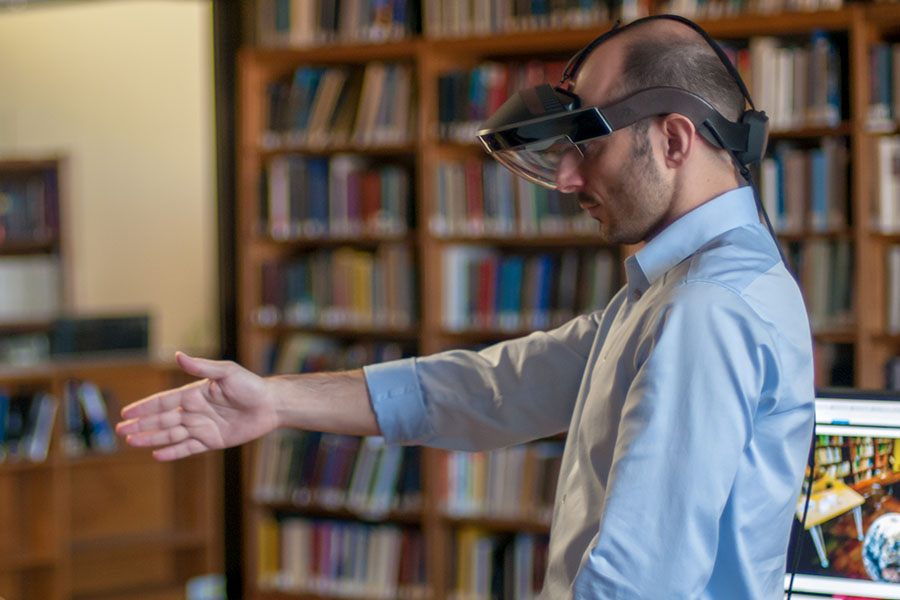Augmented Reality
Using Virtual and Augmented Devices for the Event Horizon Telescope
Modern computers are now capable of rendering virtual scenes at very high refresh rates in wide field of views; new sensors and controllers let us control computers using natural gestures in real time. Together, these technologies lead to the recent advancements in virtual reality (VR) and augmented reality (AR), which immerse us into computer simulations and bring virtual objects to our surroundings. The Black Hole PIRE project will develop software for VR and AR platforms to help us visualize large data sets, and ultimately improve our understand of black holes.
The spacetimes around black holes are fully described by Einstein’s theory of General Relativity. Nevertheless, the notion of stretched spacetimes is counter-intuitive and can lead to surprising physical phenomena. Since it is impossible to create an astrophysical scale black hole in a lab, visualizing black hole simulations is the only way we can “see” black holes. The Black Hole PIRE project will develop VR/AR software to visualize and inspect black hole simulations. These visualizations will help us understand complex phenomena and bring us new insights to black hole accretion physics that are otherwise difficult to obtain.
Modern computers are now capable of rendering virtual scenes at very high refresh rates in wide field of views; new sensors and controllers let us control computers using natural gestures in real time. Together, these technologies lead to the recent advancements in virtual reality (VR) and augmented reality (AR), which immerse us into computer simulations and bring virtual objects to our surroundings. The Black Hole PIRE project will develop software for VR and AR platforms to help us visualize large data sets, and ultimately improve our understand of black holes.

The spacetimes around black holes are fully described by Einstein’s theory of General Relativity. Nevertheless, the notion of stretched spacetimes is counter-intuitive and can lead to surprising physical phenomena. Since it is impossible to create an astrophysical scale black hole in a lab, visualizing black hole simulations is the only way we can “see” black holes. The Black Hole PIRE project will develop VR/AR software to visualize and inspect black hole simulations. These visualizations will help us understand complex phenomena and bring us new insights to black hole accretion physics that are otherwise difficult to obtain.
Credit: CK Chan, University of Arizona
Most of the telescopes in the Event Horizon Telescope (EHT) array are in remote locations. The extreme environments and limited number of on-site staff make it very challenging to diagnose and solve problems during observation. The Black Hole PIRE project will develop AR software to overlay virtual instructions on physical hardware to help the on-site staff solve instrument problems. Effectively, this will allow off-site experts to be virtually present at the telescopes and support the observations in real-time.
